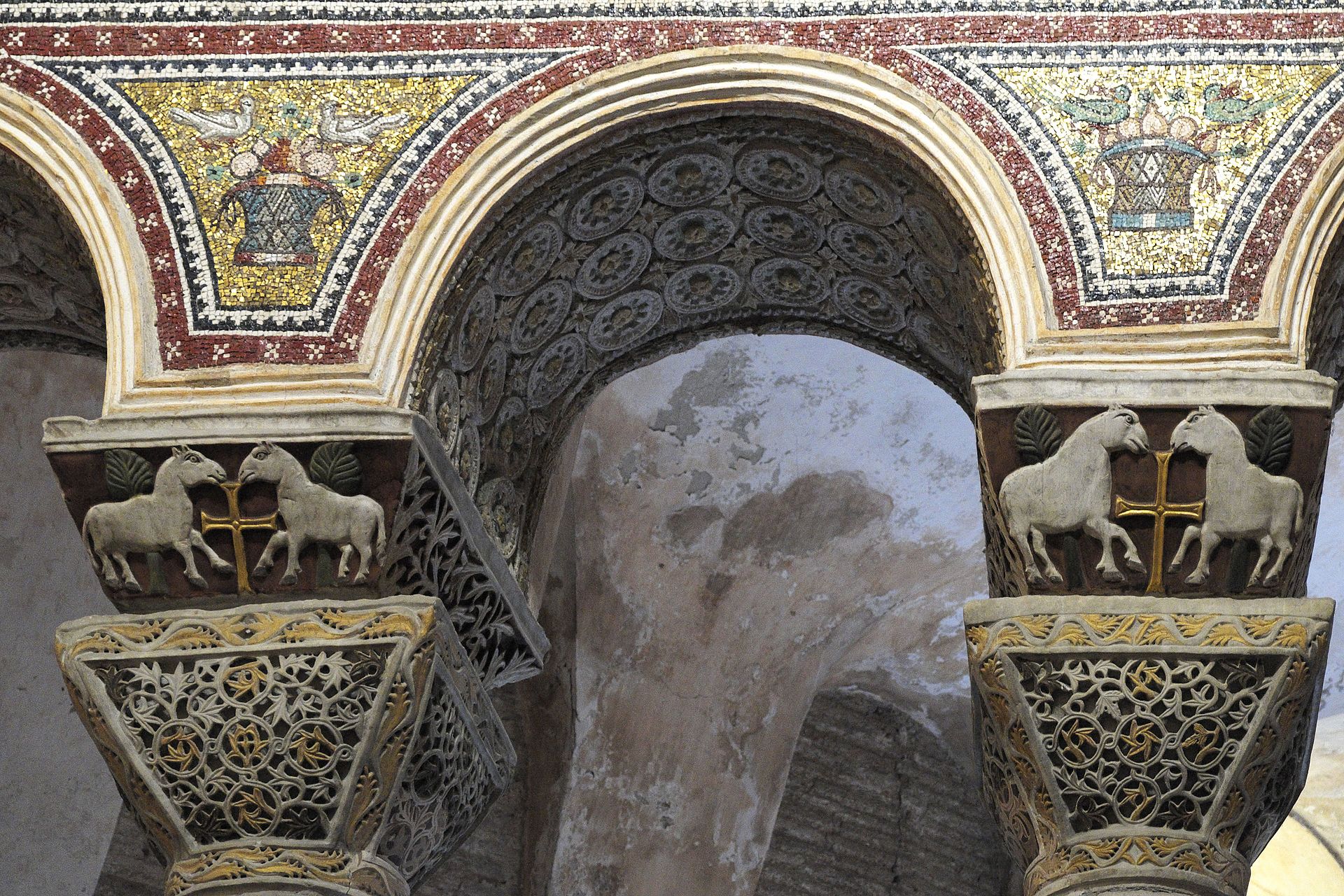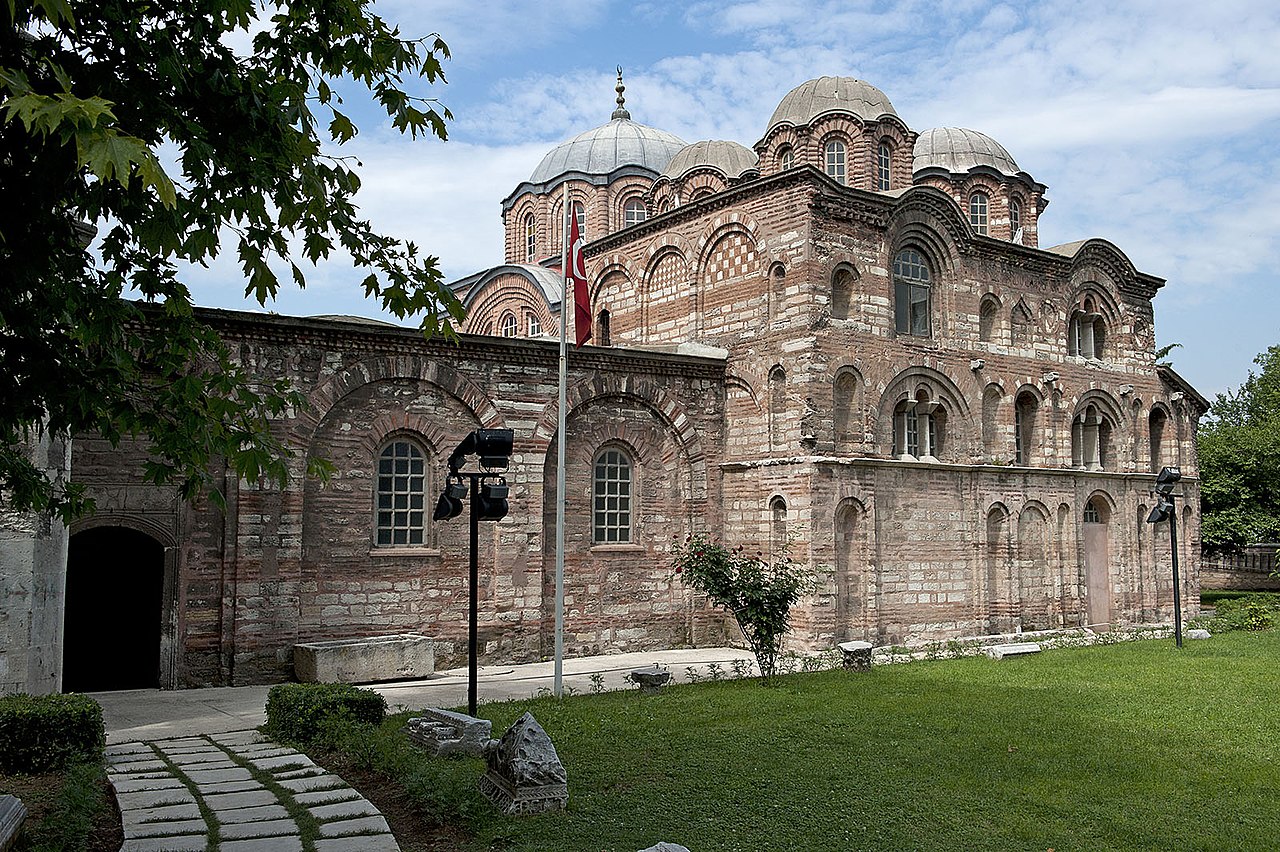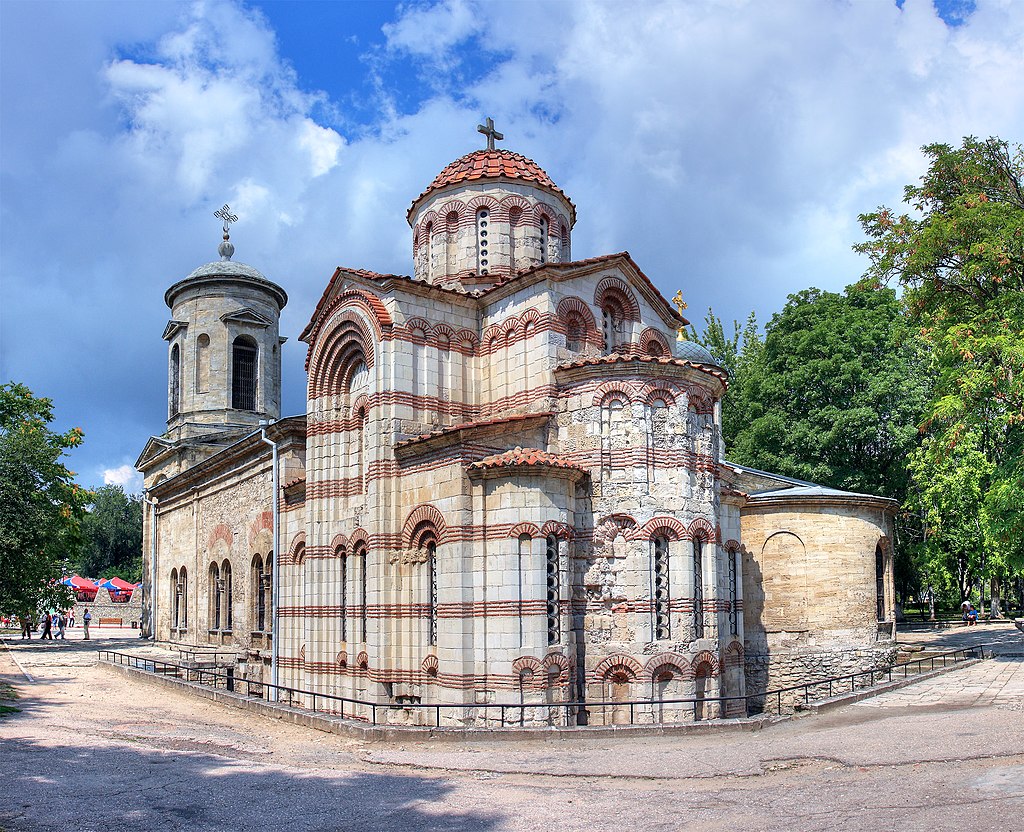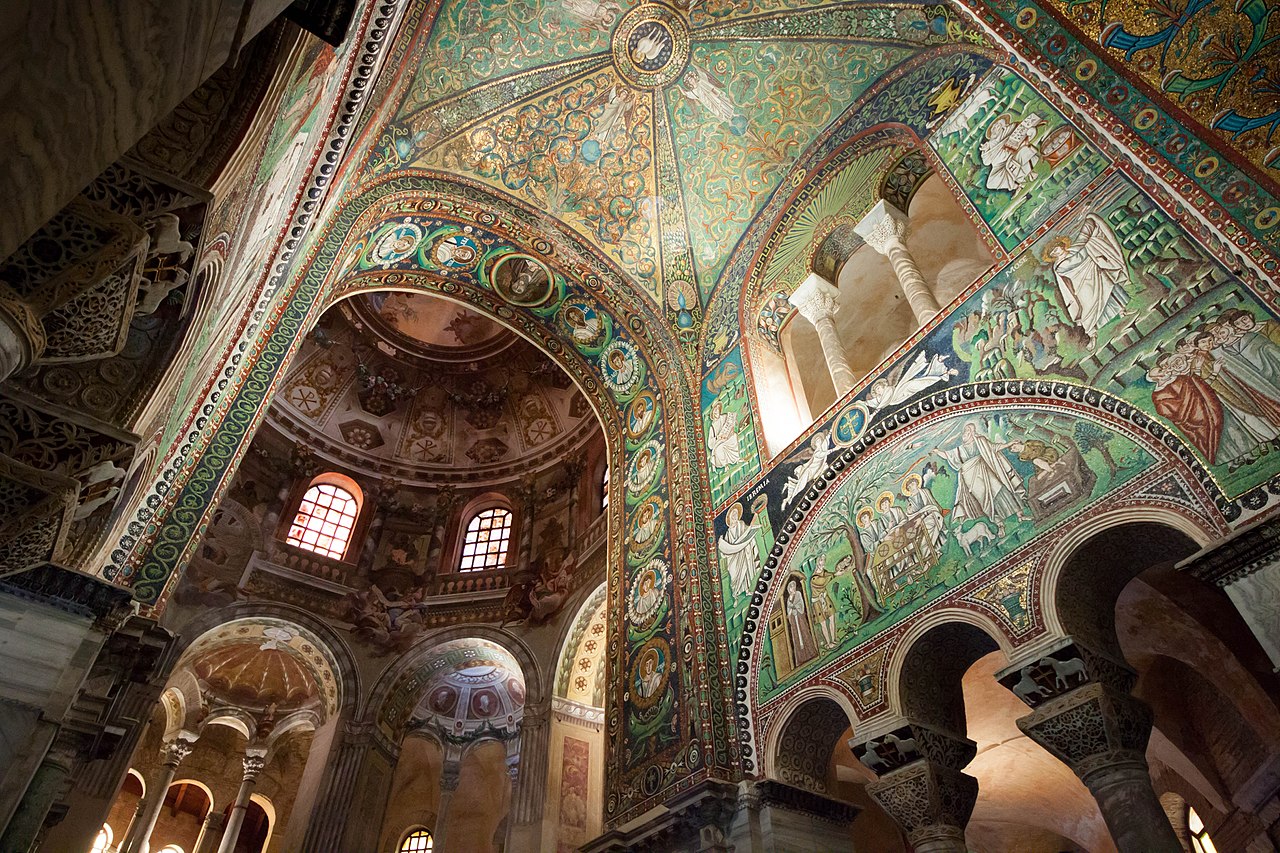The Byzantine Empire was the continuation of the Roman Empire in the middle ages. With Constantinople as its capital, it was so powerful that it lasted until the fall of the Roman Empire in the 5th century, and was in power till it was defeated by the Ottomans. During this entire period, Byzantine architecture had an era of prominence and demand. There were several important aspects about the Byzantine Architecture which is why it is still considered quite significant.
What Were the Main Characteristics of Byzantine Architecture?
The Large Dome
Byzantine Architecture featured the heavy use of large domes. This style was predominantly used in the construction of Constantinople. However, it soon spread to the whole of the Christian East. It even spread as far as some parts of Russia as well.
The dome was meant to create a very large, tall, and open space in the building. It also filtered in light, so the churches were always very well lit. The dome was made of light and porous stone, sometimes even pottery, and can be seen at S. Vitale, Ravenna. The dome sits atop pendentives or squinches. Pendentives are four concave triangles. Squinches, on the other hand, are semi-circles that open into octagons. Both of these connected the walls of the building to the domed roof.
They were there to ensure the dome was resting on a circular shape, rather than a rectangular base of the walls. It is also said that the domes were created from large, flat bricks, without any centering. Centering means providing temporary support to the dome during construction. Windows were also created in the lower part of the dome.
This domed roof is a major characteristic of churches today. This is because the majority of Byzantine buildings were ecclesiastical- which means church-related.
Small Numerous Domes
Another very distinct feature of Byzantine buildings was smaller domes built around a huge central dome. The thing requiring the most attention is the fact that Byzantine domes were undisguised by any timber roof which was usually how it was done. In this case, the domes were visible, and so the interior of the buildings resembled the exterior.
The Byzantine Greek-Cross-Plan
Early churches in the Byzantine Empire were made on the symmetrical floor plan. They were made of square walls and flat roofs. The floor plan was called the Latin cross plan.
However, the Greek cross plan soon came into use, preceding the Latin cross. The floor pattern was in the shape of the cross, with four equal arms at right angles to each other. The Byzantine church of the Holy Apostles, In Athens, shows an example of the Greek cross plan.
Columns and Arched Windows
Arched windows are an easily identifiable feature of Byzantine architecture. Windows were made arched to complement the style of the domed infrastructure. Clerestory windows, or windows created at the top of the walls, just below the roof, became very popular. These were perfect, because they let a lot of light in, and provided ventilation. These windows lit up the previously dark buildings.
Another important part of Byzantine Architecture was the use of columns. Columns were used as means to support the weight of the large, heavy roofs. They were the perfect replacement for walls. While walls would have broken the building into small rooms, columns supported the roof without breaking the open space.
Both the columns and the arched windows are features adopted from roman architecture. However, the Byzantines put their twist on them. There are a large number of carved and embellished columns, seen in Byzantine buildings all over the world. One very famous example is a leaf pattern in Hagia Sofia, Istanbul. Another example is at the Basilica of San Vitale, where floral patterns are visible.
Suggested Reading – The History of Architecture
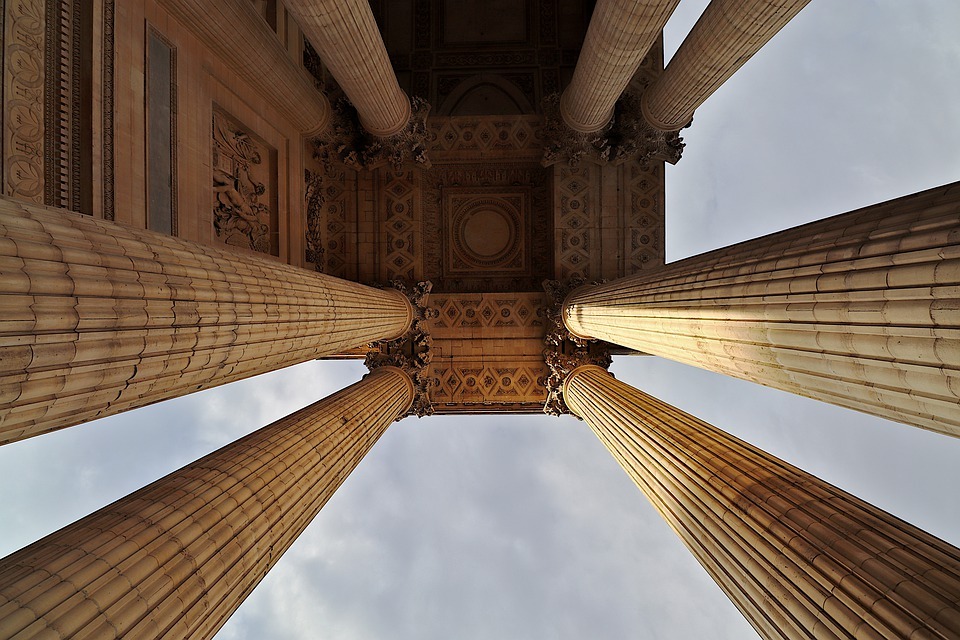
Mosaic Decoration
Mosaic was famous in byzantine architecture, for more than one reason. For one, mosaics were used to decorate plain walls. However, they were also used to create depictions of byzantine history, and even snippets of the bible. Examples of such decorative mosaics are found in Hagia Sophia, and other such buildings, byzantine buildings all around the world. There is a depiction of Justinian I, in the Basilica of San Vitale, Ravenna, Italy. Other such mosaics are the mosaics of Santa Costanza and Santa Pudenziana.
Materials Used in Byzantine Architecture
Byzantine architecture was made from concrete and bricks. This was first introduced by the Romans, and the Byzantines stuck to it throughout their reign. First, a skeleton is created, from bricks and cement. This was given time to settle. Once the skeleton was strong enough, marble slabs were added on top.
The bricks were half an inch thick, much like the Romans, and were used for decorative reasons too. On the outside, it was used to make patterns, and on the inside, it was covered with mosaics and marble.
How to Recognize Byzantine Churches?
- The ground plan. The ground plan can be circular, Greek cross, Latin cross, or basilican. The main entrance is usually from the west. The altar is at the eastern part of the church.
- Domes and large towering roofs. As discussed, the Byzantines loved their domed roofs. However, even in some places where there are no domes, Byzantine churches always have towering roofs.
- Mosaics and carving. A lot of mosaic depictions can be found inside byzantine churches.
- Arches and arched windows. Arched windows were very popular with the Byzantines, and can be found in almost every byzantine building.
Why Are the Majority of Byzantine Buildings Church Related?
Christianity was on the rise after the Edict of Milan, 313, A.D. This was under the rule of the Roman Emperor Constantine, after whom the city of Constantinople is named. Constantine announced his version of Christianity, which not only legitimized the religion but also gave its followers freedom to worship.
Christianity spread very rapidly, and with the increasing number of followers, there was a need for new places of worship. Churches were built throughout the kingdom. The Hagia Irene, in Istanbul was the first church that was ordered to be built by the Roman Emperor Constantine, in the 4th century.
Famous Example of Byzantine Architecture
Hagia Sophia
Hagia Sophia (or Ayah Sophia) is still the best-preserved, and most glamorous example of Byzantine Architecture there is to be found. It stands in the city of Istanbul, in Turkey. The building is about 1484 years old and was constructed in the time of the Emperor Justinian. After the Byzantine Empire fell to the Romans, the building was turned into a mosque. Today, however, it is a museum that people of every religion can visit.
It features a pendentive dome. There are also numerous mosaics in the building. In the corners of the Bema, depictions of the archangels Gabriel and Michael can still be seen.
Ankara Castle
Ankara castle stands at the hilltop in the city of Ankara, Turkey. While the exact date of construction of the castle is still unknown, it is said to be constructed under the rule of Emperor Constans II. It was built by the Byzantines as a military fortification, and to secure their borders.
Walls of Constantinople. In the modern city of Istanbul, the walls of Constantinople are a refreshing taste of Byzantine architecture. The walls were built to protect the entire city against intruders, and attacks. The walls were built in the 4th and 5th century, and have been subject to some major modifications.
Related – 20 Places Around The World Perfect To Live Off The Grid
Conclusion
Byzantine Buildings still stand as some of the most important buildings of Christian belief. However, it was not only popular in the Christian religion. The Byzantine way of Architecture was adopted into Islam too. Today, Byzantine buildings can be visited by everybody. There are some in Athens, some in other regions. However, the majority of these buildings are found in Turkey.

